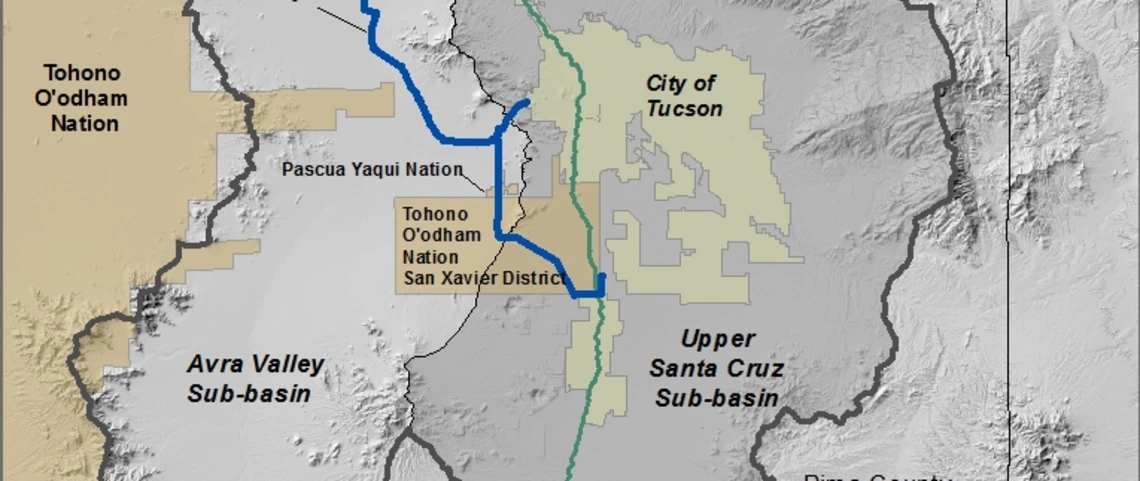BOR Article Series, Part 2: Lower Santa Cruz River Basin Study
Dec. 11, 2020
Image

 The following is part two of a four-part article series from our valued colleagues at the US Bureau of Reclamation (Reclamation). The series will cover the three Basin Studies currently underway in Arizona. John Rasmussen, Eve Halper, and Valerie Swick, Water Resource Planners at Reclamation, authored the series. Part three will be published in the December 18 issue of the Weekly Wave.
The following is part two of a four-part article series from our valued colleagues at the US Bureau of Reclamation (Reclamation). The series will cover the three Basin Studies currently underway in Arizona. John Rasmussen, Eve Halper, and Valerie Swick, Water Resource Planners at Reclamation, authored the series. Part three will be published in the December 18 issue of the Weekly Wave.
The Lower Santa Cruz River Basin Study (Basin Study) was proposed by the Southern Arizona Water Users Association and was initiated by the US Bureau of Reclamation (Reclamation) in 2016. Other cost-share partners include Pima Association of Governments, Cortaro-Marana Irrigation District, Central Arizona Project (CAP), Arizona Department of Water Resources and UArizona. The study area is identical to the Tucson Active Management Area (TAMA), which covers 3,866 square miles in Southern Arizona. Municipal use comprises the greatest portion of water demand in the TAMA, followed by agriculture. The remaining industrial demand is primarily due to mining.
For over 60 years, cities, farms, and businesses in the Tucson area relied on groundwater, with pumping greatly exceeding replenishment. In 1993, the Central Arizona Project began delivering Colorado River water to the Tucson area, but there are still local supply-demand imbalances due to lack of delivery infrastructure and recharge capacity. This Basin Study is working to identify where physical water supplies are needed to mitigate these imbalances and is developing strategies to improve reliability for the municipal, industrial, and agricultural sectors. The Study partners also requested an evaluation of the impacts to the environment, focusing on the local riparian areas that provide important ecological and recreational benefits. Adaptation strategies will address environmental needs as well as those of other water sectors.
The Study partners requested a hydrologic analysis that would consider the variability and seasonality of precipitation in Southeastern Arizona, including the monsoon rains. To this end, Reclamation scientists worked with Dr. Chris Castro and Dr. Hsin-I Chang of the UArizona Hydrology and Atmospheric Sciences Department to utilize a “dynamically downscaled” climate projection. The projection relies on a “model within a model” approach to simulate atmospheric processes at a scale appropriate to monsoon rainfall. Reclamation staff also used advanced methods to reproduce the natural variability of local precipitation for Basin Study’s surface water modeling. The climate, surface water, and groundwater modeling is now complete and the process of developing adaptation strategies has begun. The Study is expected to be completed in September 2021. You can learn more about this Basin Study at https://www.usbr.gov/lc/phoenix/programs/lscrbasin/LSCRBStudy.html, or contact Eve Halper at ehalper@usbr.gov.

